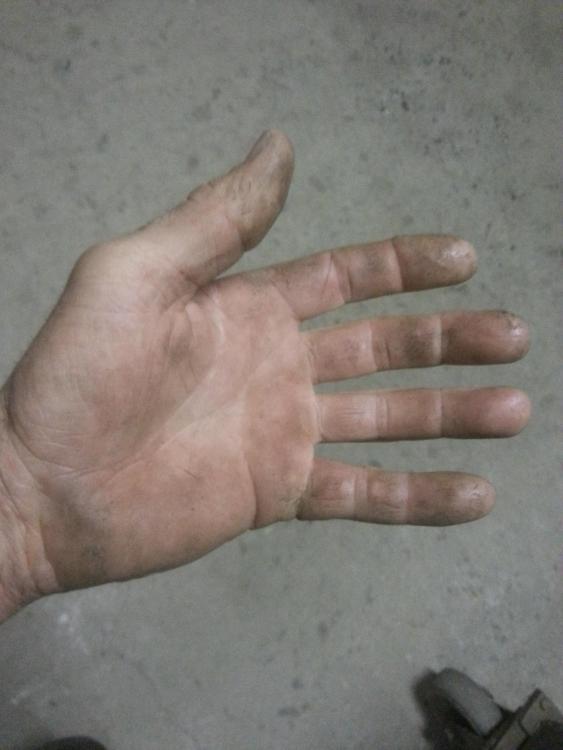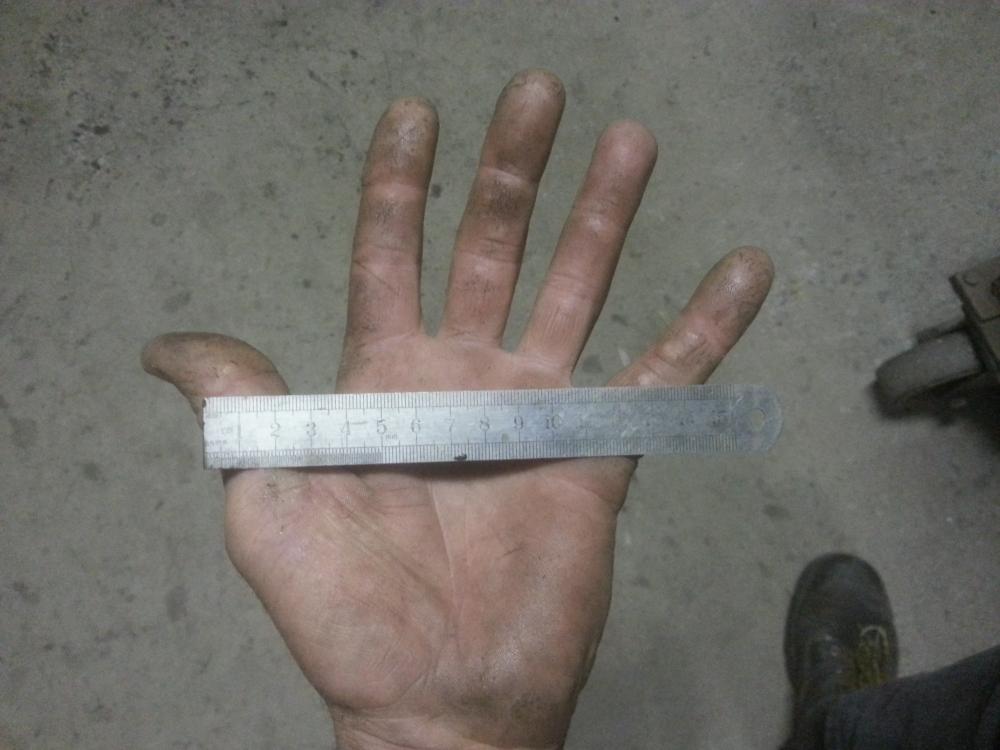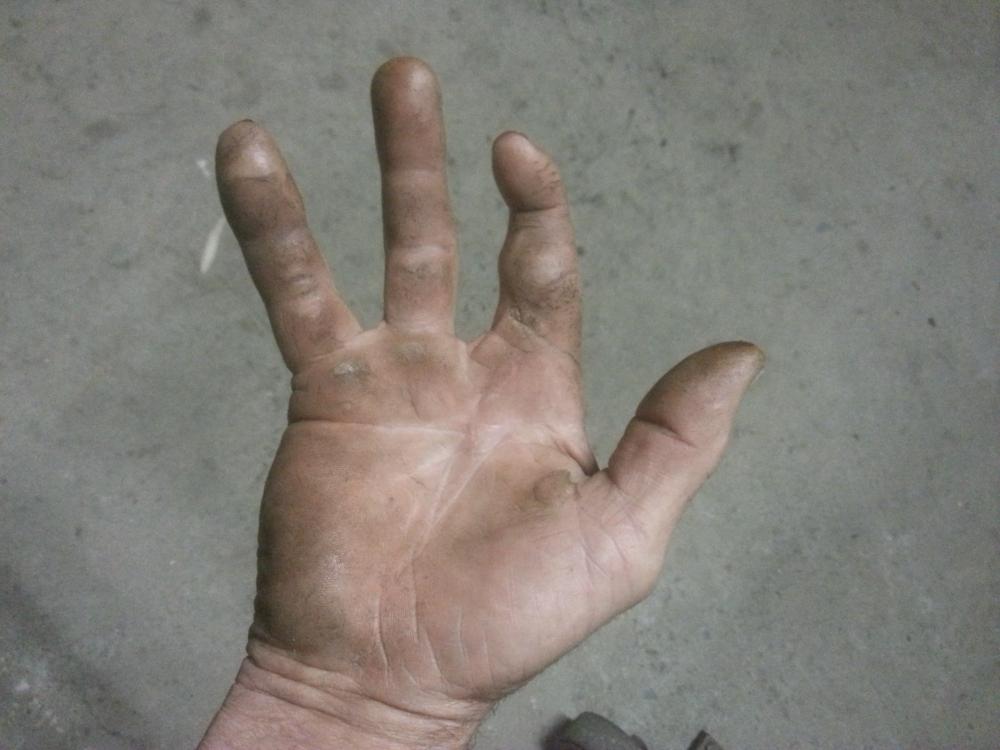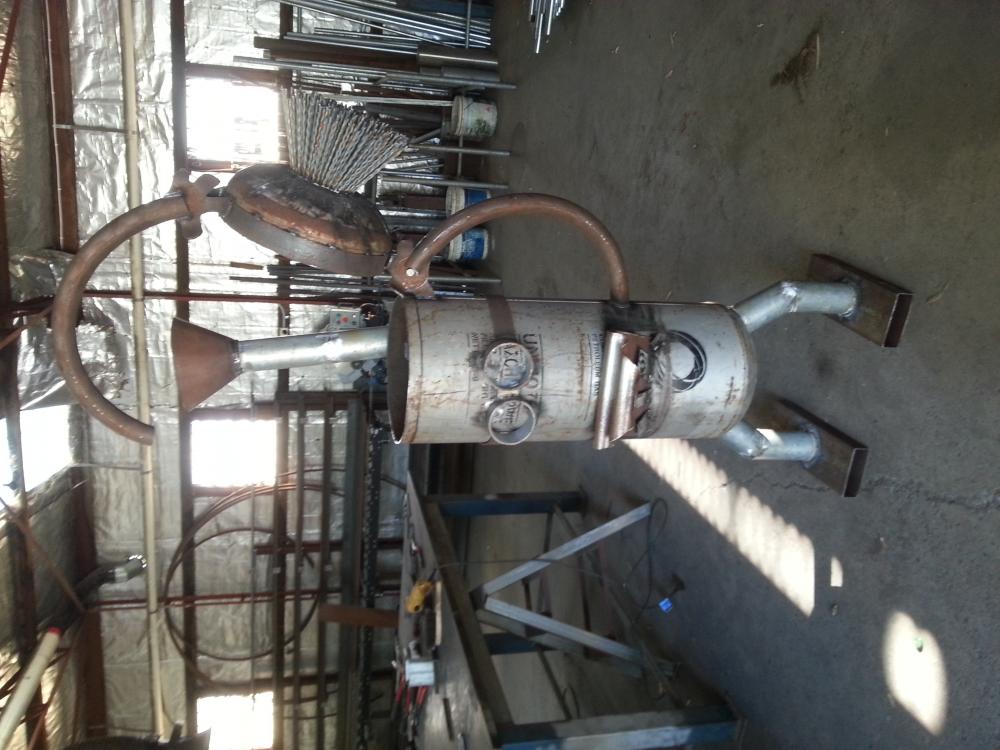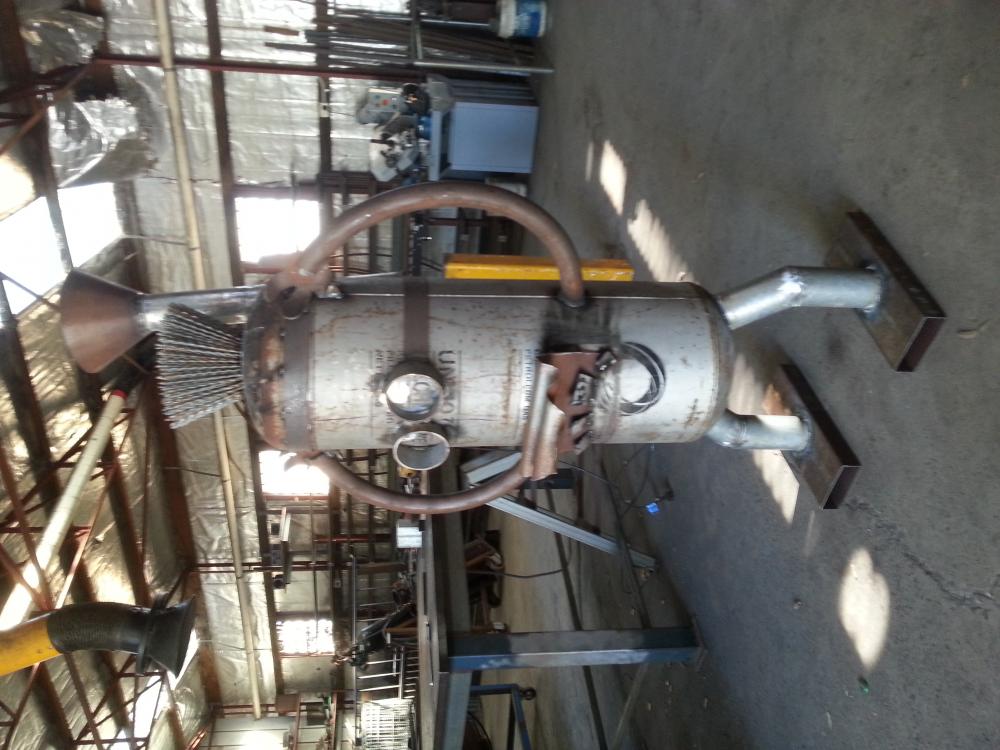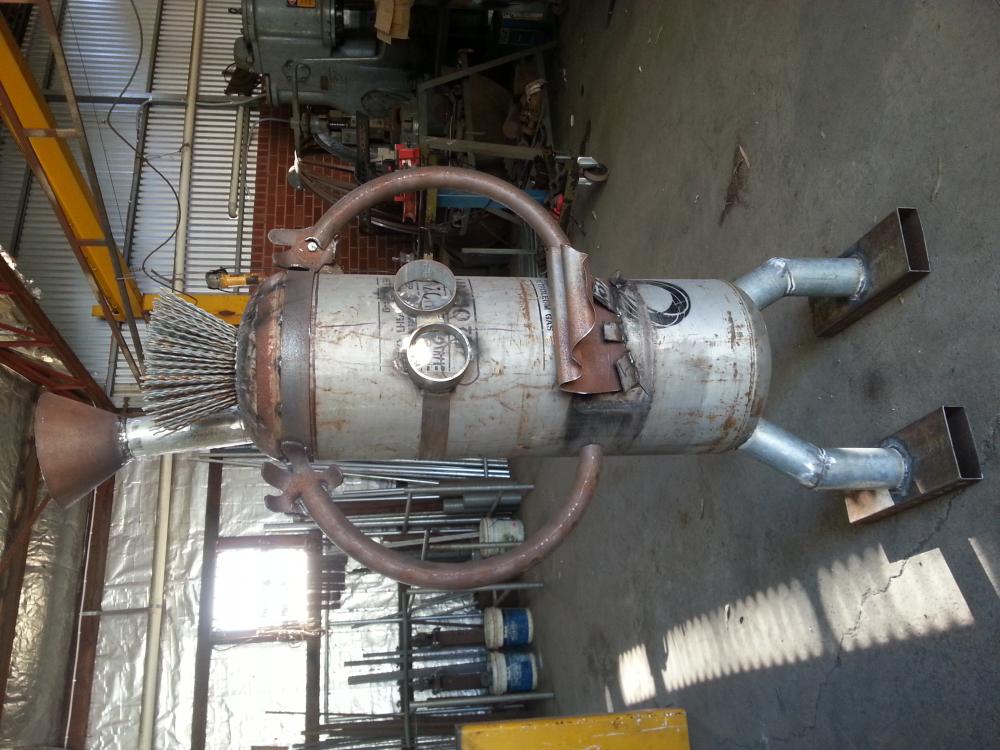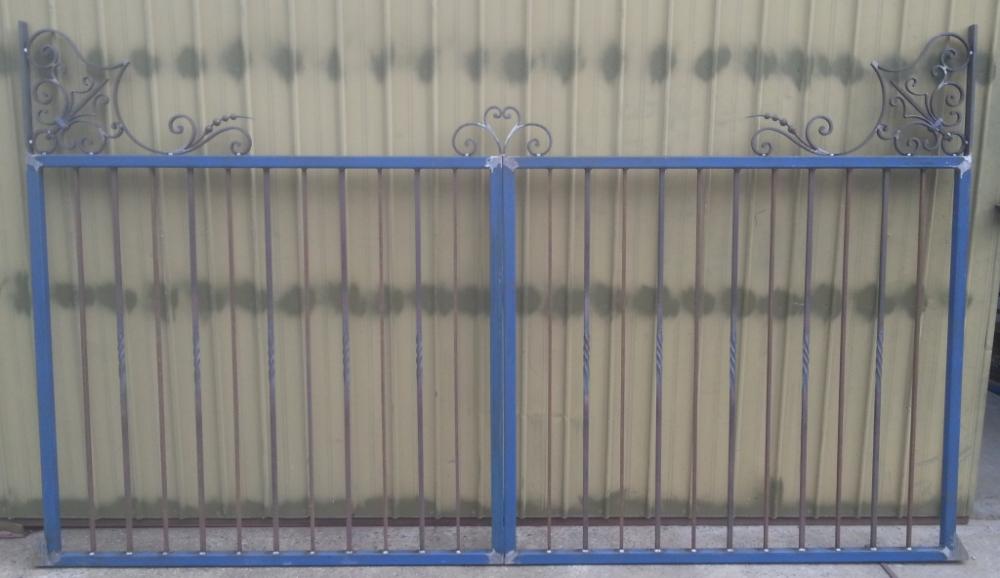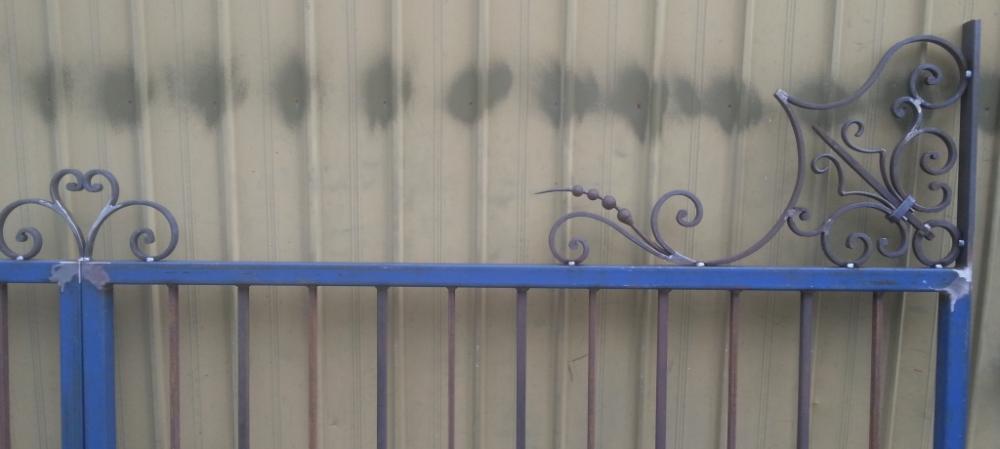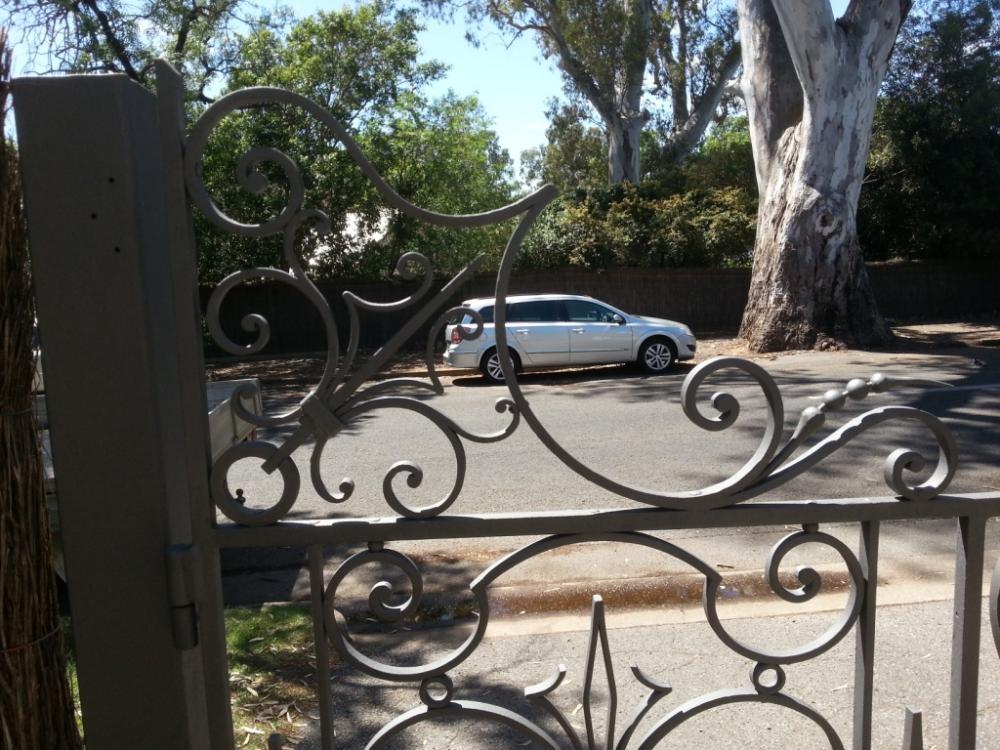-
Posts
180 -
Joined
-
Last visited
Content Type
Profiles
Forums
Articles
Gallery
Downloads
Events
Everything posted by Farmweld
-
Bodkins are always good as a quick demo item, especially if you can get them down to two heats. I use 10mm stock and once I get into the rhythm can get most of it made in the first heat, second one to tidy it up. Plus you can always tell the story of King Arthur rolling up at the smithy and saying "I've got a battle at Agincourt next Friday and I need a hundred thousand by then". (or words to that effect)
-
Hi Ausfire, The smellie is a feed head for a chaff cutter, there was also a flywheel with a couple of blades on it in the left of the first picture. That one looks in good nick so find the rest of the bits, set it up, and you're in the horse feed business! Andrew
-

Punching an eye in SMALL round stock
Farmweld replied to Derek Melton's topic in Blacksmithing, General Discussion
Alan, would you please post some pictures of your slit/drift tools. I ask because I did some volunteer work in a musuem at Riverton in South Australia which was the original town smithy and wheelwrights shop. There were some slit/drift tools on one of the benches which had been made from various different bits of tool steel, including old files and rasps, which it took me a while to work out were exactly what you are describing. Most of these were probably used on wrought iron from the age of the smithy, and they were definitely one way tools which you would have to put all the way through in one heat as a big one went from a slot about 35mm long and 4-5mm wide to a 25mm dia hole in one continuous punch about 250 - 300mm long. There was a distinct neck behind the slot where it transitioned from rectangular to oval to round. I've been trying to work out a way of making smaller ones for the smaller sizes of steel I use and it looks like you are achieving the sort of result I am after. Regards Andrew -

What I learned losing three bids in one day
Farmweld replied to rockstar.esq's topic in The Business Side of Blacksmithing
Rockstar.esq, The problem is that the insurance assessors have very little knowledge of or experience with decorative wrought iron. Most of what they see is imported cheap stuff and they have no idea what it is worth. I quote on replacing it with "real" and "solid" stuff and the claimant gets the payout but buys the cheap replacement and pockets the difference, usually after promising that they will buy from me once they get the payout. Hence my refusal to quote on replacing imported junk for insurance purposes, unless someone is prepared to pay for my time quoting. Andrew -

What I learned losing three bids in one day
Farmweld replied to rockstar.esq's topic in The Business Side of Blacksmithing
Thanks everyone for your replies, this particular business sub-forum is one I keep an eye on because it has helped me several times in the past, particularly around quoting and business standards. Not wanting to hijack the thread but one of the main problems we have in Australia is the cost/quality and respect equation. The wrought/decorative iron market has been flooded with cheap imports that invariably rust out in short order or get damaged. I've often been asked to provide quotes for insurance purposes to replicate these things, inevitably multiple times what they paid for them, insurance pays out, and they go buy a cheap import again. No respect for the time I've put into the quote or the quality of the product I could produce. It's got to the stage I just inform the insurance company straight out that it is an import and worth nothing and let them fight it out with the client. It's nice to get clients that appreciate the quality in what I produce and that are prepared to pay for it, even when you do have to educate them a bit. We regulary get clients to come out to the workshop to work on the design of what they are after. If I can do it I will have the forge running and make up one or two elements on the spot and when they see how much work goes into a scroll or a spear they really begin to appreciate why I charge so much for hand made work. Andrew -

What I learned losing three bids in one day
Farmweld replied to rockstar.esq's topic in The Business Side of Blacksmithing
I've had a few similar to job 3. Requested to quote on balustrades or fences that were just too big for me to handle if I was realistic about it. Spent several hours to days working out the quotes which were high because I don't have the capacity to fabricate what they want and never heard anything back. I've gradually worked out it's builders/architects/owners shopping around for the lowest price they can get. I've also learned to say straight up if I can't handle a job and walk away happy that I've just saved myself a lot of hassle. Andrew -
Hands are an interesting subject My left hand and the same holding a six inch/150mm ruler But my right hand is a different story Bart Simpson eat your heart out. Momentary lapse of concentration cutting firewood on a circular saw running off the PTO on the back of a tractor. My index finger doesn't bend in the middle anymore but, like all things, you learn to live with it (had to re-learn trigger pressure with another finger though). Happened about thirty years ago and I still have to make a living each day, either with a hammer or a keyboard, or both. The shiny bits in all the pictures are calluses and the dark bit at the base of my right thumb is a really thick one which is where a ridge on my hammer handle hits, helps me keep track of where the hammer is. As always, there are prople a lot worse off than me, I just want to show that you can work past minor problems like missing appendages and still get things done. Andrew
-
Buy it in quart? tins and add it to oil based paints to make them go further/stick better. I've thinned it out a bit and fed it through a spray gun but you waste a lot through overspray. Usually we just slop it on with a paint brush and let it dry.
-
What can I say but - In-A-Gadda-Da-Vida
-
We use a product called Penetrol which is actually a paint additive but it does give a fairly durable clear finish, even outdoors it lasts a couple of years before needing re-coating. Original manufacturer is American so you should be able to find it in paint stores or hardware over there.
-

Got a bucket of these on a job I did
Farmweld replied to MarvinB's topic in Blacksmithing, General Discussion
My Brother works in a mine crushing plant where they use a ball mill and I got some similar ones except about 6" dia. He did warn me that in the crusher if they ran it too dry and the balls got hot they were liable to fracture/explode. Might be worht checking out before you put them in your forge. Andrew -
Get the Heat Treat app on your phone and/or look up the forging temperatures for H13 (or any tool steel for that matter) and stick to them. I had a H13 slitter that I had forged too cold fracture right down the middle first time I used it. Andrew
-
I quite regularly teach classes of four using one (large) coke forge, an anvil each, and one leg vice, Forge etiquette is one of the first things they have to learn as there is a fair bit of ribbing goes on if one person pushes the others out of the fire and as Thomas said, set it up so that all go different ways with hot metal. You'll find that the students will have different work rates and one will complete a task quicker than the other so there shouldn't be too much competition for the vice or standing around being bored as they can go on to the next project. By the end of the first hour I've had one student has made two "S" hooks to his satisfaction while the student next to him is still perfecting his first taper. It can be interesting watching the interplay/competition that goes on between two mates who will stir each other about mistakes/flaws in work but then offer advice on how to fix at the same time. I enjoy teaching groups up to this size, any more and you are running around too much trying to keep track of what's going on. Andrew
-
Ausfire, Those bird legs are crankcase through bolts, and if they're from a Cessna then they're probably from a Continental, I had to torque up heaps of them in a previous life, Every time I see one of your sculptures with aircraft bits in them it brings back memories. Andrew
-
Always known that as a truckies knot. Many years ago but I can remember seeing a trucky tie a semi load of wool bales three high down using 100' ropes and without pulling the rope through the tie rail once. There was/is also a story (possibly urban myth) dad used to tell me about an Aussie wharfie winning a bet with a US sailor during WWII about being able to break a ships hawser by hand. He tied about five truckies knots in such a way that it gave him a multiplier effect when pulled and broke the hawser where it was tied to the bollard. Still used it every time I tie a load down with rope, especially after watching one customer spend half an hour looping a rope around and around and around to tie a gate onto his roof rack, and it was still loose when he finished. Andrew
-
I saw a photo on here of a minion that someone else had made and I thought I would give it a go as I have had a hankering for a shed minion for a while. Now all I need is some heatproof purple paint and he's all finished. He's meant to be one of the feral minions from Despicable Me 2 and technically he shouldn't have a fart gun but I needed to make the chimney out of something so he got one. His tongue also doubles as a bit of a sausage holder/cooker and you can just balance a pan on his hair (need to give him a haircut with the anglegrinder and flatten it out a bit). Unfortunately it will be another two or three months before fire ban season finishes and I can fire him up and see how he burns
-
I tried an old crucible as a tuyere and the worst problem was clinker melting into the surface so that when I went to chip it off afterwards it also chipped chunks out of the crucible. Otherwise it worked well. Andrew
-
I made a pool fence similar to this and we made up a "random bend generator", cut all the stock to length, spread (dropped bundles wherever) it out in front of the workshop, and then drove the forklift backwards and forwards over it several times. Andrew
-

show me your destroyed anvil!
Farmweld replied to joshua.M's topic in Repairing and Modification to Anvils
I saw that anvil on fleabay a couple of days ago, and he still wants AU$2000 for it. Wondered what was going on with the different patination on the side. I thought it had just been flappy disk ground to clean up the edges. -
Hi all, Here's a pair of gates I've nearly finished for a customer. The gates themselves are a bit plain as all the money went into the toppers. About 40 hour spent on them so far and another 3 or 4 making a latch to go. The bottom picture is the original topper from another set of gates that I had to copy. Hope you all like them Andrew
-
The top one has done some work but is still useable, the stars could be a punch of some sort been driven into the side and you have to love people with welders that can't resist leaving blobs everywhere. The big one looks like a SOHO pattern but the tool steel deck is missing? Andrew
-
Hi Ausfire, definitely water cooled tuyere's for a side blast forge. I've got a copy of an old foundry catalogue and it lists them and all sorts of other blacksmith/wheelwright goodies. Check for rust holes before putting them to use. Andrew
-
Anvil prices in Aus have always been stupid but the influence of the "pickers" and "auction" and similar type TV shows have made it worse. The prices in the International Tat Bazaar* and Eucalyptus* ads you have shown above influence many other new seller in the market as well. There are a couple of sellers on the above sites that always ask too much to try and keep the prices high and anyone looking for a steampunk garden ornament will pay because they don't know any better. Unfortunately if it looks old and used it must be an "antique" and therefore worth a ludicrous amount of money. TPAAAT works! Get to any farm clearing sales you see advertised as blacksmithing gear is often lumped under the "too many sundries to list" category, and you can talk to other buyers at the sale about what you are after. Our local blacksmithing group (ABASA) does demo's at various different locations and anyone that walks up and says they still have the aged relatives blacksmithing gear in the shed gets told that if they sell it through us they will get a reasonable price and it will be USED (which often helps for some reason). <rant>Macca, you mentioned rescuing from a scrapper, OH&S and insurance companies have killed scrounging in scrap yards in South Australia so you were lucky to get into yours. I've heard too many stories from when scrap was A$400+ a ton of whole farm yards being cleared out, either intentionally by the farmer for the money (we're never going to use any of those old tools/equipment again, several tons of wrought iron in ploughs gone), or in several cases where aged widows had a "nice young man" come and clean up all the scrap that was laying around, and all the old furniture in the shed, and he only charged me $200 to do it. There should be a special place in hell reserved for people who do things like that.</rant> Andrew * online auction and sales sites, names changed to avoid advertising for them.
-
Hi Jim, I took a hammer and checked all of the face, it didn't have any dull sounding spots and rebound was good so I figured it was OK. The welded section showed up when I cleaned all the gunk off and then I could just pick parts of the weld edge (undercut) which were hard to distinguish from the hammer dings and a slightly different colour/sheen to the metal on the face where it had been buffed by the wire wheel. When I was cleaning off the high spots there was a variation in the sparks from original face to the welded section but they still looked like high carbon sparks so it looks like the repair was done by someone who had some idea what they were doing. The anvil has been well used since it was welded so I don't think it will be a problem, just disappointed that I didn't pick it up on initial inspection as I may have been able to talk the price down a bit. I'll make up a stand and use it for a while and then decide whether to keep it or move it on. I've got two other anvils that have had the face welded and both are perfectly fine to work on. One was a 430# Wilkinson that had the heel broken off and about 1/3 of the face missing. Previous owner had the face welded up and a 1" plate with hardy hole and two pritchel holes welded on to replace the heel with a gusset each side to maintain the visual lines. Its about 370# now and I picked it up for $275 after several "purists" had knocked it back because it was welded. My gain. Andrew

